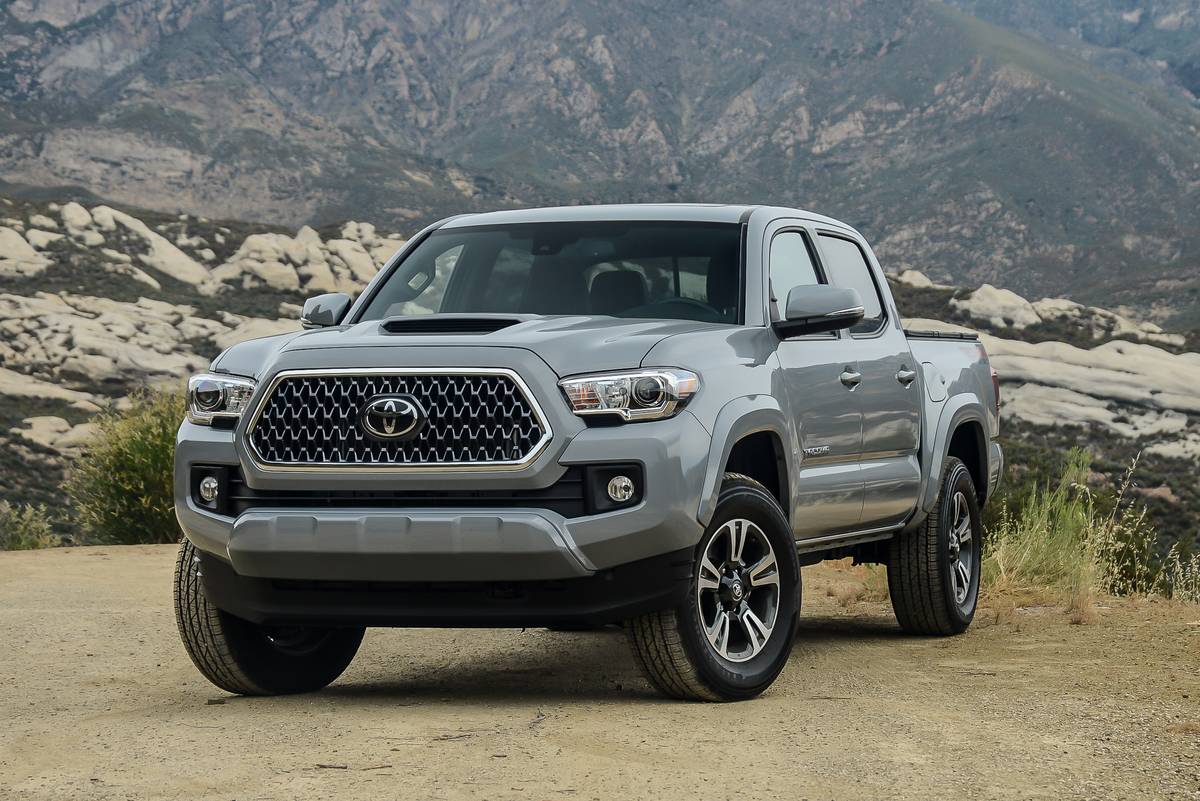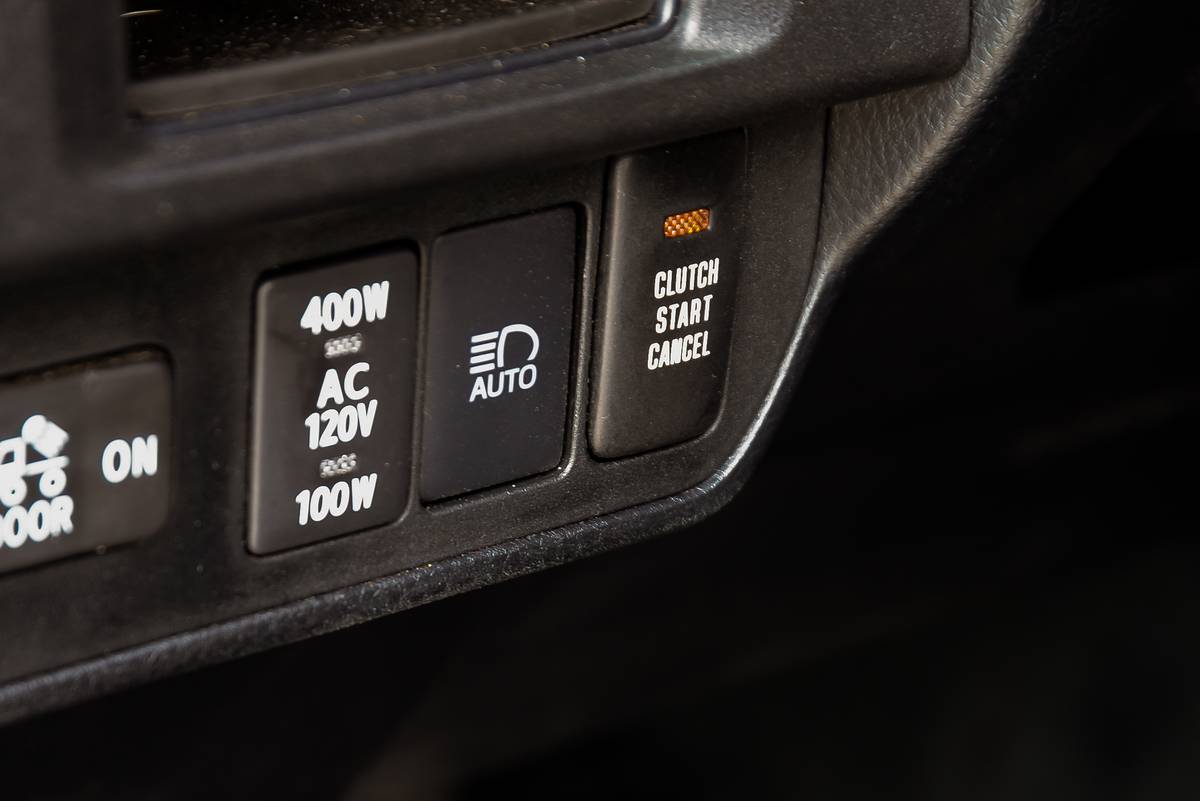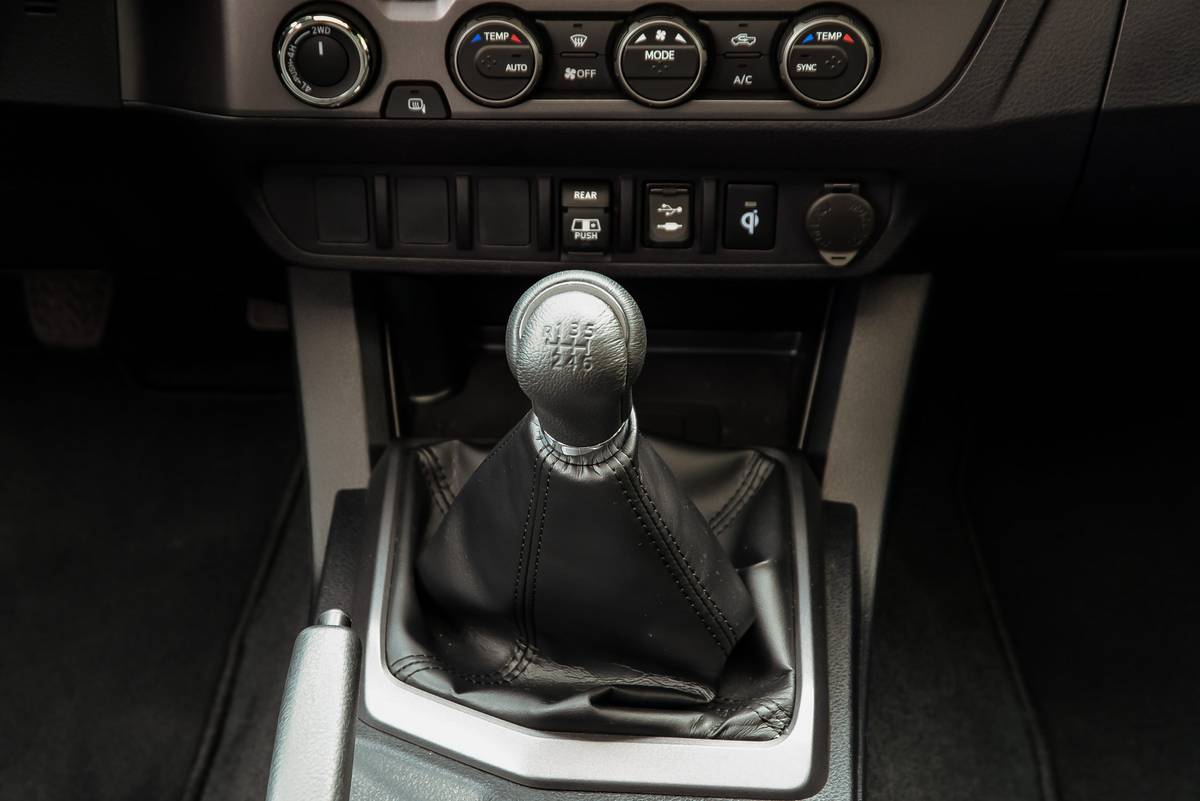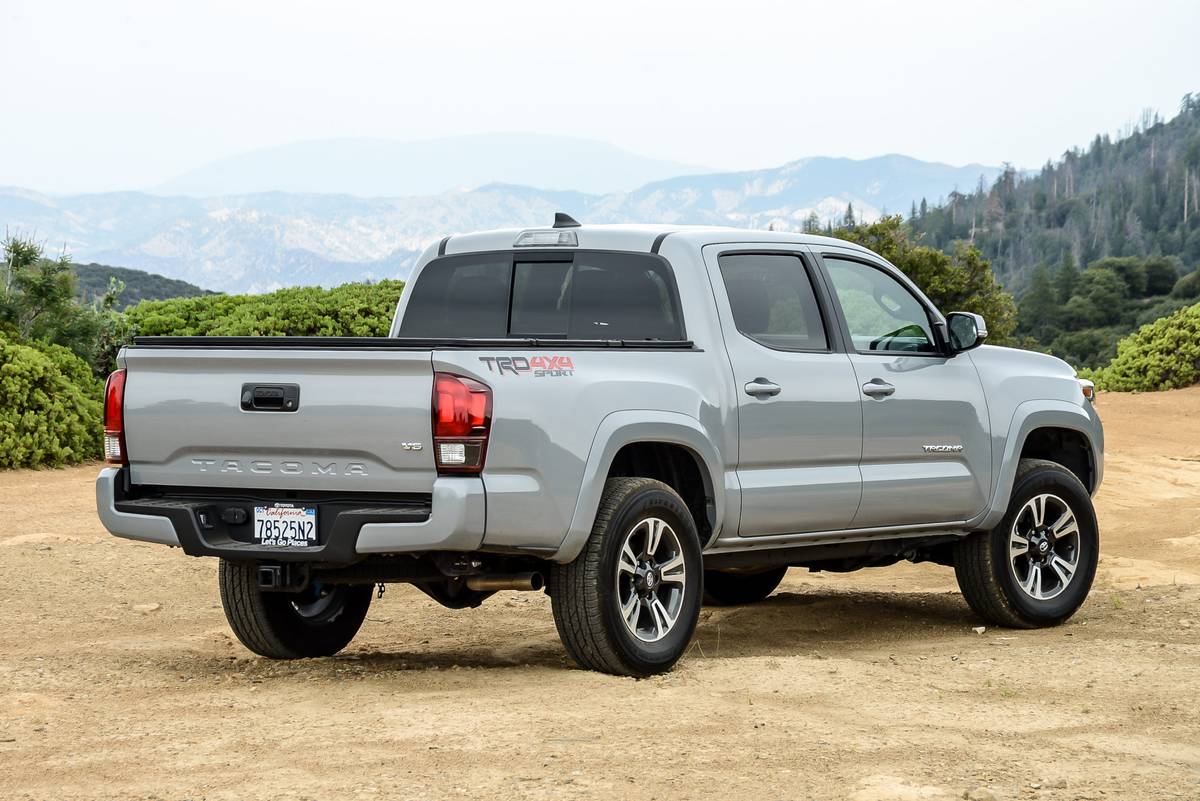Which to Buy: A Toyota Tacoma With a Manual or Automatic Transmission?

Manual transmissions have nearly vacated the U.S. pickup market, though you can still get one in a few Nissan Frontiers and V-6-powered four-wheel-drive Toyota Tacomas, begging the question: How does a Tacoma with a six-speed manual compare to the automatic transmission?
Related: Find a New Toyota Tacoma With Manual Transmission for Sale Near You
Let’s get the bad news out of the way first: The manual transmission doesn’t add any power or subtract any weight — indeed it weighs 20 pounds more, and payload is lower by the same. Even with a manual transmission, the Tacoma remains not fast, and it’s harder to locate one. In Cars.com’s national new Toyota Tacoma inventory, only 944 examples with a manual transmission were listed at the time of writing versus 21,156 with an automatic.

The EPA says the manual will use more gas, and the truck we tested, a 2019 double-cab 4X4 TRD Sport, is rated 17/21/18 mpg city/highway/combined while the comparable automatic is 18/22/20. It’s important to note that a 1- to 2-mpg difference is far less than the difference among driving styles; I recorded a low of 16.3 mpg combined, a high of 22.1 and an average of 20.2. Apart from being 4WD, this truck’s street-tread tires, double-cab configuration and, most important, tonneau cover, gave it every advantage. In mid-size pickups, the Chevrolet Colorado and GMC Canyon diesels (22 mpg combined), the Ford Ranger (22 mpg) and Honda Ridgeline (21 mpg combined) are the best fuel economy candidates with four/all-wheel drive.

As manual transmission pickups go, the Tacoma is generally pleasant to operate. Shift throws and clutch effort are mild; they never fatigued in traffic and clutch feel inspires confidence it can handle the double cab’s 6,400-pound maximum trailer weight (same as the automatic). This was despite awkward ergonomics and why-did-they-bother minimal steering wheel telescope that had me sitting closer than I preferred. Clutch engagement is smooth enough for downhill street starts in 2nd or four-wheeling, and there’s a clutch start cancel switch for those sticky situations where you stall atop an obstacle and don’t want to roll back down; my only stall was trying to back uphill slowly; that resulted from too few revs and a Reverse gear not as deep as 1st.

Considering that the Tacoma is a pickup and not a car, the whole shifting process is fine with three minor exceptions. First, there’s a significant spring detent between the main H-pattern and Reverse, which is forward to the left — it even beeps going into Reverse. However, since the Reverse to 1st shift is essentially a U-pattern with a secondary detent going 1st to Reverse, it’s not the easiest for rocking the truck if you’re stuck without the Crawl Control of the TRD Off-Road 4×4 or TRD Pro. Second, when forced to slow from cruising speed and needing full power to accelerate, the 6th to 2nd downshift requires a little care to avoid going past the Reverse detent. If you do pass the detent it won’t grind into Reverse, but it won’t go to 2nd either. Lastly, the driveline mounts aren’t that stiff, so when I needed full power in 1st gear low range (think sand and mud) and tried to get 2nd quickly, I missed it maybe one in five times and had to start over. Those were the only shifts I missed.
Manual Tacoma axles run 4.3:1 gears versus the “taller” or “slower” 3.909:1 axles in automatics where a torque converter handles slippage the manual’s clutch must endure. First gear is built to get going loaded or when empty with minimal revs — if I didn’t have to slip the clutch I’d start in 2nd. It’s easy to lunge forward in 1st, yet there’s no point as it just makes the upshift to 2nd less smooth, and once in 2nd, you’re in the land of a 3.5-liter V-6 tuned for fuel economy and hybrid service in a 4,500-pound pickup — not fast. As in the automatic, maximum acceleration requires maximum revs, and it gets noisy in that 5,000-6,200 rpm rev range, so better to plan ahead and stick to mid-range muted snarls. On the other hand, it was surprising to see, at 4,000-5,000 feet, the truck would still climb a mountain grade in 5th or 6th gear at less than 2,000 rpm, near resolute to keep going but similarly unable to accelerate without a downshift or three.
This six-speed manual has two overdrives, so cruising at 60 mph in 6th saves about 380 engine rpm compared to 5th, and there is a paucity of acceleration at that pace. As one who doesn’t generally cruise pickups at 90 mph, I’d rather have more intermediate gears than two overdrives.
We’ve said of the automatic Tacoma that it’s often best to simply switch to power mode or be ready to slap it into manual mode, and by definition the manual gearbox solves that issue. You choose for conditions and mood, not what the truck’s computer and programs determine to be best and is arguably skewed to fuel economy. You also know we’ve complained about drum brakes but that’s less of a concern here — the drums’ holding power and relatively little handbrake effort is impressive and makes hill launches much easier, and the manual delivers better engine braking than the automatic so you brake less. Did we mention this is not a fast truck?
Beyond shifting yourself, the largest differences between the manual and automatic are the availability of manuals, and you can’t opt for JBL sound with a stick. Where offered, the manual is a minimum $1,630 less expensive than the automatic for 2019 and 2020 Tacomas.
What if I were Tacoma shopping? Remembering that I am hundreds of miles from any flat interstate, I would find a manual gearbox and invest the $1,630 or more I saved. In three years when the warranty expires, I’d put that money toward an axle shop swapping in 4.88:1 gears. It would put top gear revs between 5th and 6th as stock, improve acceleration across the board, and based on experience and how much time I spent in 6th, cost me little to nothing in overall fuel economy.
Your mileage will vary, however.
Cars.com’s Editorial department is your source for automotive news and reviews. In line with Cars.com’s long-standing ethics policy, editors and reviewers don’t accept gifts or free trips from automakers. The Editorial department is independent of Cars.com’s advertising, sales and sponsored content departments.

Featured stories



